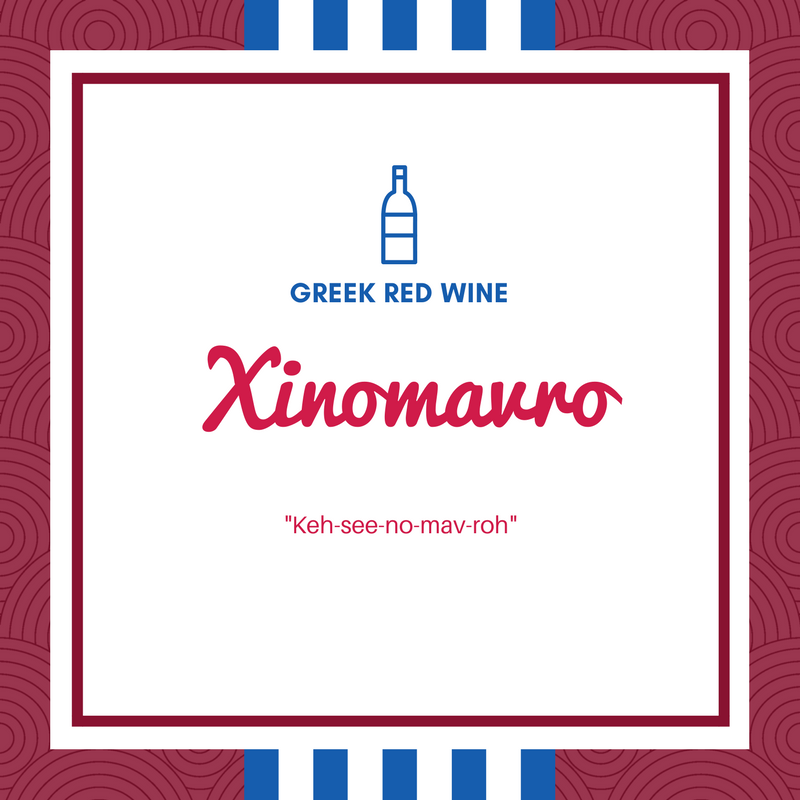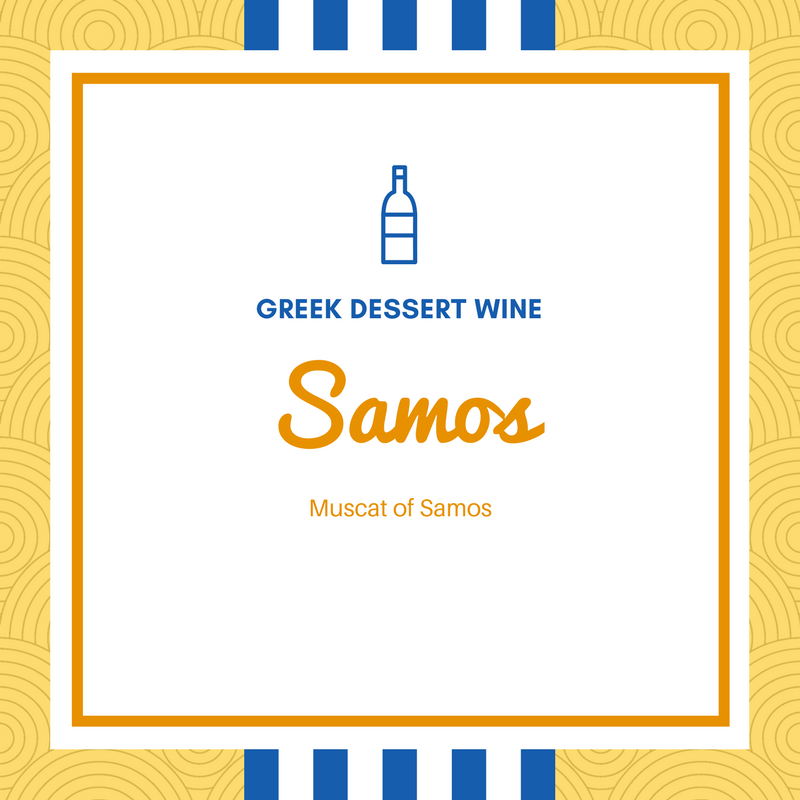Greece was once one of the foremost producers of wine in the ancient world. However, in contrast to the country’s important wine heritage, modern Greek wines have only recently reached the rest of the world.
These days, Greece offers outstanding wine value and new varieties to expand your palate!

This guide will give you a lay of the land of 12 Greek wines you should be sipping right now.
12 Greek Wines To Explore
12 Greek Wines to Know
-

Assyrtiko from Santorini
Assyrtiko is one of the country’s top wines, produced across the country. Assyrtiko’s most impressive region is its place of origin on the island of Santorini. This is a lean white wine with passion fruit, flint, and lemon flavors, subtle bitterness, and saltiness on the finish.
Assyrtiko labeled as Nykteri (“nith-terry”) are always oaked and offer more lemon brûlée, pineapple, fennel, cream, and baked pie crust notes.
-

Moschofilero from Mantinea
On central Peloponnese, close to Tripoli, grows Moschofilero, a lovely dry, aromatic white wine with flavors of peach, potpourri, and sweet lemon. As the wines age, they develop more nectarine and apricot flavors with toasted hazelnut or almond notes. For those who love Moscato d’Asti, this is a great new variety to explore.
-

Malagousia from Northern Greece
The white grape Malagousia is a more recent discovery after being single-handedly resurrected by a winery in Northern Greece called Ktima Gerovassiliou (the word ktima is like saying “estate” or “chateau”).
These wines offer a richer white wine style. They’re almost like a cross between Viognier and Chardonnay, with peach, lime, orange blossom, and lemon oil all tied together with a soft, fruity finish.
-

Savatiano from Central Greece
When made well, Savatiano offers flavors of sweet honeydew, green apple, and lime with tingling acidity, akin to Chablis. With oak aging, Savatiano delivers lemon curd, wax, and cultured cream with lemon bread notes and a creamy mid-palate. The structure and finish are similar to White Burgundy. Savatiano is a surprising discovery from a grape that has long been thought to be the doldrums of Greek wine.
-

Retsina from Central Greece
With sap infusions from the Aleppo pine tree, Retsina is a Greek specialty. Retsina wines have aromas of linseed oil and lime peel that lead into flavors of apples and roses, with a subtle piney, saline finish. Retsina wines from Assyrtiko grapes tend to be more angular in their style (but age longer.)
In contrast, Retsina wines from Savatiano grapes have a more generous taste with ripe apple and peach flavors, and an oily texture on the palate. Only a few producers know what they’re doing with this wine, so choose wisely!
-

Agiorgitiko from Nemea
Agiorgitiko (Ah-your-yeek-tee-ko) comes from Nemea, a region in Peloponnese which is most famous for this grape. These red wines are full-bodied with flavors of sweet raspberry, black currant, plum sauce, and nutmeg with subtle bitter herbs (somewhat like oregano) and smooth tannins.
The wines are generous and fruity, similar in style to Merlot, but with slightly more spice. Rosé versions made with Agiorgitiko have wonderful spiced raspberry notes and a brilliant deep pink color.
-

Xinomavro from Naoussa
Some call Xinomavro “The Barolo of Greece” because it can taste strikingly similar to Nebbiolo. Expect dark cherry fruit, licorice, allspice, and occasionally subtle tomato notes with high-tannin and medium-plus acidity.
In Naoussa, vineyards are predominantly on limestone-rich clay soils (marl), which gives this region’s Xinomavro wines additional structure (tannin) and bolder fruit characteristics. These are good wines for the cellar!
-

Xinomavro Blends from Rapsani
On the slopes of Mount Olympus, the region grows the core red grapes of the Xinomavro blends on rocky soil. Blended wines are typical, with a dominance of Xinomavro and spicy flavors of raspberry, anise, fennel, cherry, and occasionally olive or tomato.
The wine’s tannins build slowly (but surely!) on the palate. If you enjoy Rhône blends, Rapsani is the Rhône of Greece, and you should put it on your list to try.
-

Greek GSM Blends from Crete
On the southernmost island of Crete, you’ll find one of the warmest wine climates on earth. The native red grapes of Crete (Kotsifali and Mandilaria) sometimes blend with Syrah to create a wine with sweet red and black fruit flavors, cinnamon, allspice, and soy sauce, with a softer sweet tannin finish. This wine is very smooth and fruity.
-

Vinsanto from Santorini
Also on Santorini Island, you’ll find Vinsanto, a sweet sun-dried wine that smells more like red wine even though it’s made with Assyrtiko, Aidani, and Athiri white grapes!
These wines have aromas of raspberry, raisin, dried apricots, maraschino cherries, and sometimes paint thinner (from higher levels of Volatile Acidity – e.g., the ‘nail polish’ smell). Even though the smell is arresting at first, you’ll be seduced by the contrasting sweet fruit and bitter flavors. This is from the wine’s noticeable tannins (a surprise for white wine!).
-

Muscat of Samos from Samos
Muscat of Samos comes in various styles, from dry to sweet, but also with Muscat’s typical aromatic lychee and perfumed notes. One of the most popular styles is Vin Doux, which is a mistelle (a blend of fresh Muscat juice and Muscat grappa–muscat spirit). It offers sweet marmalade, lychee, and Turkish delight flavors, with subtle hay notes on the finish (a characteristic of grappa).
-

Mavrodaphne Blends from Peloponnese or Kefalonia
Of all the wines in Greece, this has the most potential to improve. Usually, Mavrodaphne is made into a sweet, late-harvest red wine that tastes like raisins and Hershey’s Kisses, with crunchy high tannins. Some producers are smartening up and blending it with other grapes.
Mavrodaphne produces a rich, full-bodied, soft, dry red wine with blackberry, cherry, and licorice notes. We’re looking forward to tasting more of these dry Mavrodaphne blends!

Learn more about the wine regions of Greece and how to find quality.
